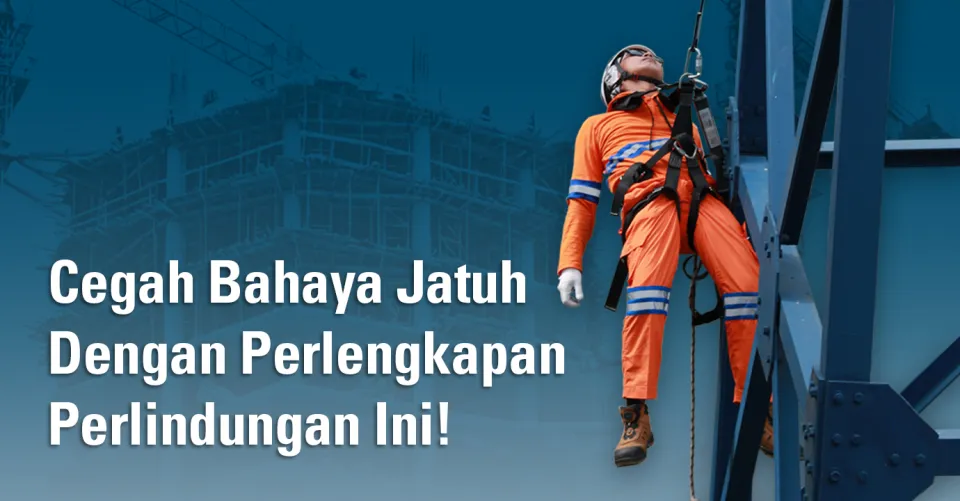
Prevent Fall Hazards with This Protective Equipment!
Any work performed at heights carries the risk of falling. To avoid this, every worker must minimize these dangers with preventive equipment.
Components of Fall Hazard Protection Equipment
What should workers or employers pay attention to in this regard? Several pieces of equipment can be used to prevent falls. Here is the essential gear to wear when working at heights:
Use Type II Helmets (V-Straps)
One of the essential pieces of equipment when working at heights is a helmet. There are two types of helmets: type 1 and type 2. SpanSet recommends using type 2 helmets with V-Straps. Why? If we are working at heights and an object falls and hits our head, the helmet won't easily come off, preventing additional hazards while we are busy adjusting a loose helmet.
Wear a Full Body Harness (2/4 Point)
The next essential gear is a full body harness. You can use a 2 or 4 attachment full body harness depending on the conditions you face and the type of work being done. Some tasks require carrying a lot of equipment to high places, while others require only a few items. Therefore, you should conduct Risk Management before determining what equipment to use when working at heights.
Lanyard
A fall protection lanyard is crucial when working at heights. There are various types of lanyards commonly used, such as:
- SpanSet DSL2 Double Retractable Hybrid Lanyard
- SpanSet Single Rope Lanyard with Absorber
- SpanSet Double Webbing Lanyard with Absorber
For more details on SpanSet Lanyards, you can check the specifications here.
Quick Guide for Working at Heights
As a company specializing in height safety, lifting, and load control, here are some guidelines SpanSet provides before working at heights:
- Understand the company's fall protection plan.
- Attend height work training, including the use of fall protection equipment, working on scaffolds, lifts, or ladders.
- Ensure you have a Work Permit for working at heights.
- Secure the location for working at heights.
- Use fall protection equipment while working at heights. Ensure you use the appropriate fall protection equipment and that it is in good condition.
- Inspect fall protection equipment before use.
- Attach the hook above your head or at least at chest level to reduce the impact force if you fall.
- If using scaffolding, ensure it is securely and robustly installed, with stable footing and safety rails. Ask a supervisor to inspect the scaffolding and put up safety signs.
- Choose a standard ladder for working at heights, pay attention to the angle and position of the ladder, ensure it is stable, and in good condition.
- After completing the work, clean the work area and organize the equipment as before.
- Report to your supervisor if you find potential fall hazards or accidents in the work area. Stop work if necessary until it is safe to resume.
What will you gain from SpanSet training? You can see the details on this page for more information.
For further consultation about SpanSet Indonesia products and services, please contact us via email at [email protected] or WhatsApp
To find specification detail and prices of SpanSet Indonesia Products, please visit SpanSet Indonesia Marketplace on Tokopedia and Shopee.